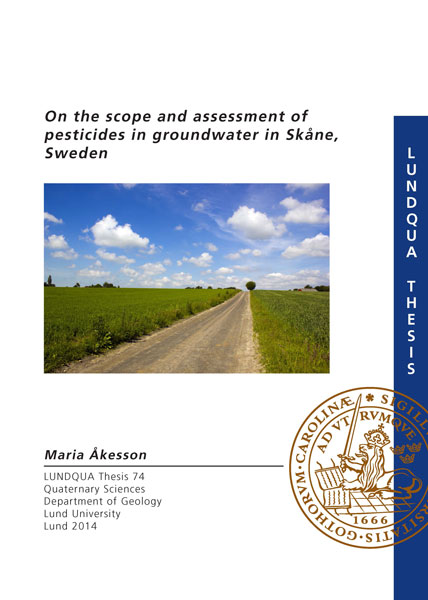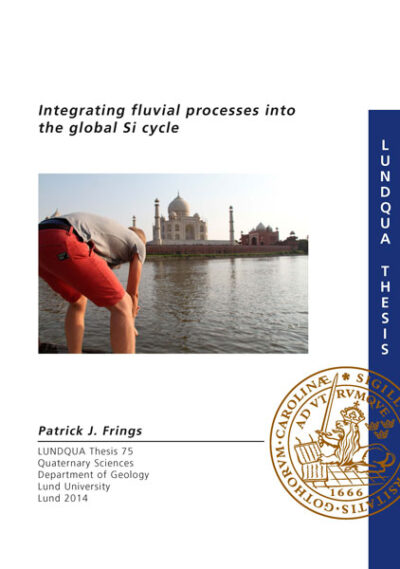Beskrivning
Pesticides are known to occur in groundwater worldwide. However, long-term pollution concerns and cause-effect relationships for specific regions remain limited. This thesis explores the occurrence of pesticides in south-Swedish groundwater, with the aims of providing a better knowledge basis for assessment and management of present-day and future pollution risks. The investigations are restricted to Skåne, which is a relatively populous, intensively cultivated and geologically diverse region located at the tip of the Scandinavian Peninsula.
The research shows that pesticides are present in very different types of groundwater systems around Skåne, suggesting a wide-ranging, multi-faceted and potentially long-lasting pollution concern. Seemingly, it is only the groundwater environments devoid of influence of waters having recharged since the onset of widespread pesticide use that may be regarded as completely safe and unaffected. Many of the pesticides detected stem from past, less restricted use, primarily for weed control outside of agriculture. Yet, current and future pollution concerns should not be regarded only as a matter of “old sins” as residues from currently used substances manifestly continue to leach towards and into the groundwater system.
Through various analyses of comprehensive data sets both at the regional and the catchment scale, a number of particularly important aspects of regional pesticide occurrence in groundwater and future prediction thereof are inferred and investigated. In addition to application intensities and fundamental physicochemical pesticide properties, these include precipitation and recharge patterns in relation to pesticide application events, (mainly superficial) sorption and degradation processes efficiencies, multiple-scale subsurface physical heterogeneity directing water and solute flow (particularly the presence of preferential flow pathways), and groundwater turnover rates. Environmental tracers show great potential as tools for simple but effective calibration of transport models and for deciphering pollution trends and patterns. However, there are certain tracer-specific complications in need of further attention for future application in Skåne.
For the future, regional as well as nationwide monitoring of pesticides in groundwater needs to be expanded and regulated for sound groundwater and pollution risk management and in order to be able to comply with environmental directives and the EU Water Framework Directive.


